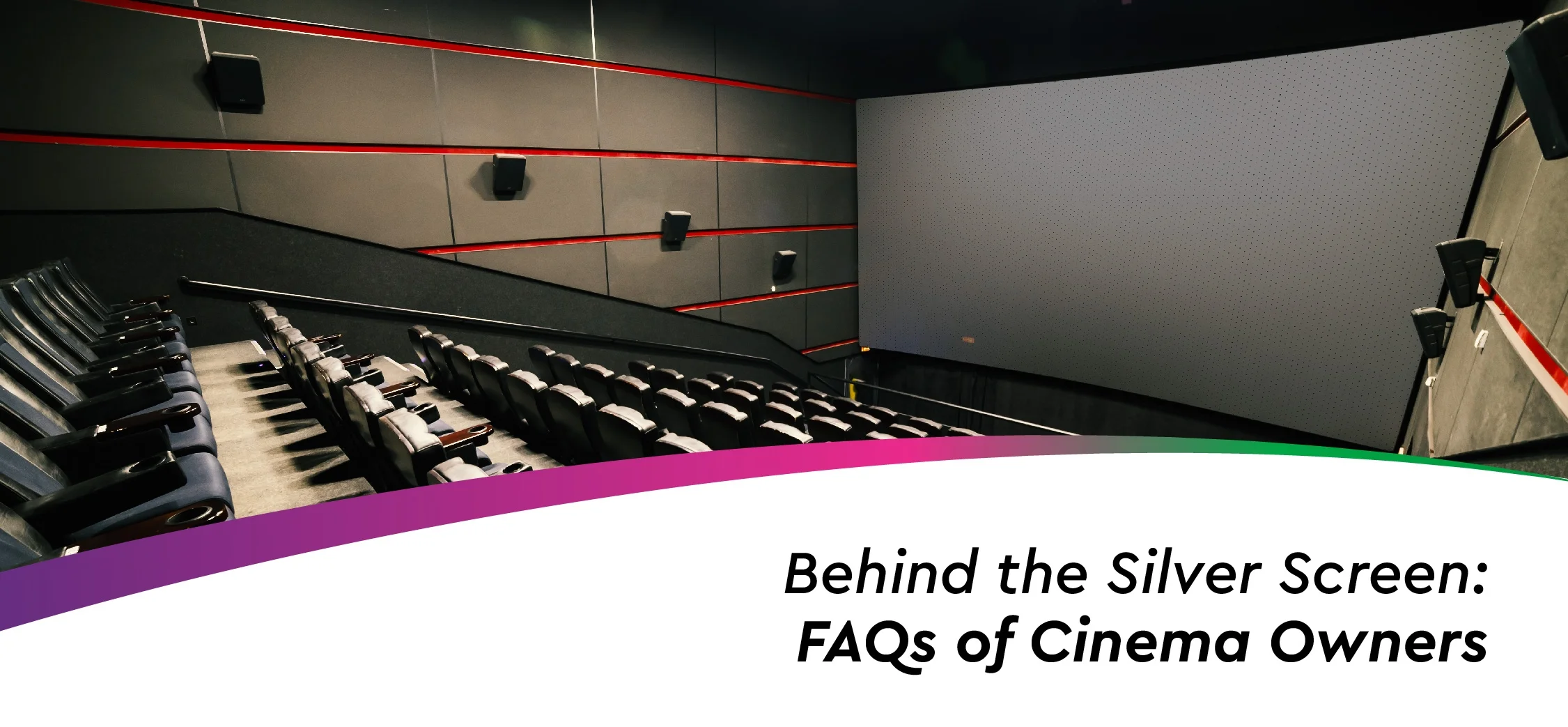
A cinema screen is not just a medium to display a movie. It is an essential element in making the viewing experience valuable. A well-chosen screen can enhance brightness, sharpness, and even the immersive feel of 3D effects. For cinema owners, understanding the nuances of different screens and technologies is essential for delivering a superior movie-going experience. In this blog, we will discover the types of cinema screens and answer some frequently asked questions to help you make the best decisions when it comes to your auditorium.
Types of Cinema Screens
While choosing a cinema screen, one should pick an appropriate aspect ratio for the size of the screen
Widescreen 1.85:1 vs. Cinemascope 2.35:1: These are the two most common aspect ratios found in cinemas today. Widescreen offers a more rectangular image, and Cinemascope offers a wider, more panoramic view. The choice between these two depends on the type of content you frequently show and the kind of experience you want to provide.
Specialty Screen: Other aspect ratios like Academy (1.33:1), European Widescreen (1.66:1), and silent film ratios may require special projector capabilities. These ratios are less common today but are still used in specific contexts, particularly for screening classic or specialized films.
Screen Materials and Technologies
The material of the cinema screen and the technology behind can bring a great difference to the viewing experience.
High Gain Screens: High gain screens are engineered to ensure more light is reflected back to the audience, thereby giving a brighter image. These screens are particularly useful when many people view images in large auditoriums, and therefore there is a need for brightness to be used.
Lensray Technology by Galalite: Galalite’s Lensray technology enhances image sharpness and clarity. It is designed to minimize speckle caused by laser projectors, ensuring that the picture remains bright and clear, even in the largest of auditoriums. This technology also helps in reducing hotspotting, a common issue with high-gain screens.
Digital vs. Film Projection
The cinema industry has largely transitioned from traditional film to digital formats, bringing with it several benefits.
Transition to Digital Cinema: The shift from film to digital projection has revolutionized the movie industry. Digital projection offers more consistent quality, easier storage, and distribution, and reduces the wear and tear associated with film reels.
Digital Cinema Package (DCP): DCP is the standard digital format used in cinemas today. It supports various resolutions, including 2K, 4K, and even 8K, offering a much higher quality viewing experience than traditional film. The move to digital has also enabled the seamless integration of 3D and other advanced technologies.
Maintenance and Care
Care should be given to cinema screens for longevity and, at the same time, to sustain quality.
Best practices for screen maintenance: Since your cinema screen is a reflective surface, regular cleaning is necessary. For example, the silver screens should be treated carefully since their coating may be damaged when cleaning.
Handling Archive Prints: If your cinema occasionally screens older films, it’s important to handle archive prints with care. Proper storage and handling can help the prints last as long as possible, so future audiences can enjoy them.
FAQs
Q1: What is the best screen size for my auditorium?
The ideal screen size depends on factors like the size of your audience, the distance between the screen and the seats, and the capabilities of your projector. A larger screen isn’t always better if the projector can’t adequately illuminate it.
Q2: How do I handle different film formats?
Using variable side and top masking allows your screen to adapt to different aspect ratios, ensuring that all content is displayed correctly without any distortion or cropping.
Q3: What are the costs and benefits of switching to digital projection?
Digital projection offers economic advantages, such as lower costs for film distribution and storage, and logistical benefits like easier setup and maintenance. However, the initial investment can be high, and some traditionalists argue that digital doesn’t quite capture the warmth of film.
Q4: Do silver screens work with 2D movies?
Yes, silver screens can be used for 2D movies, but they might not offer the same viewing angle or color accuracy as white screens, which are generally preferred for 2D content.
Q5: What is the gain of a silver screen?
Silver screens typically have a gain of 2.0 to 3.0, meaning they reflect light more brightly than white screens, which is particularly useful for 3D movies.
Q6: How does the viewing angle affect the audience experience?
Silver screens have a narrower viewing angle, which can cause the picture to appear dimmer for viewers seated at the sides. This is less of an issue with white screens, which offer a wider viewing angle.
Q7: Are silver screens compatible with all projectors?
While silver screens work with most projectors, they are optimized for 3D and high-brightness projectors, ensuring the best possible performance in those contexts.
Q8: Do silver screens affect color accuracy?
Yes, silver screens can slightly alter the color balance of the image, particularly for 2D content. This is due to the reflective coating that enhances brightness but can also shift colors slightly.
Q9: What are the maintenance requirements for silver screens?
Silver screens require more careful maintenance than white screens. The metallic coating is sensitive to damage, so it’s important to clean them with the appropriate materials and techniques.
Q10: How long do silver screens last?
With proper care, silver screens can last between 5 and 10 years. The exact lifespan depends on usage and environmental factors, such as humidity and air quality.
Q11: Are silver screens more expensive than white screens?
Yes, silver screens generally cost more due to the specialized coating and manufacturing process involved. However, the investment can be worthwhile for cinemas that prioritize 3D content and high brightness.
Q12: Can silver screens be perforated for sound transparency?
Yes, but perforations can reduce the screen’s reflectivity and slightly diminish its effectiveness for 3D movies. This is a trade-off that needs to be considered when prioritizing sound quality and 3D performance.
Selecting an ideal cinema screen highly impacts and contributes to a superior viewing experience. Cinema owners need to be educated on the types of screens, the associated technologies, and the required methods of maintenance for optimal decision-making, in regard to improving the quality of their productions, thereby leading to improved customer satisfaction. For more information and top-tier cinema screens, contact Galalite, the leaders in cinema screen technology since 1969.
Related articles



